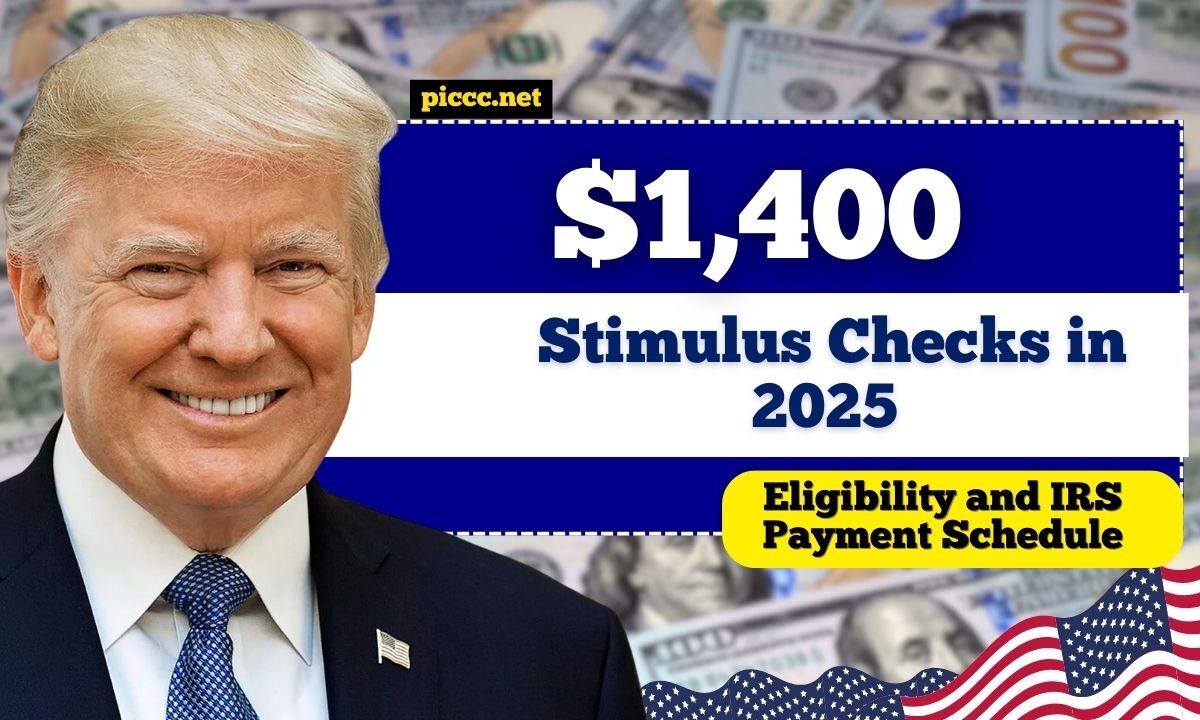The Internal Revenue Service (IRS) has officially confirmed that $1400 stimulus checks will once again be issued to Americans in 2025.
This announcement comes at a crucial time, as millions of households continue to face challenges with rising living costs.
From groceries and housing to healthcare and utilities, basic necessities have become harder to afford.
Recognizing this financial strain, the U.S. government has taken action to provide additional support through direct payments aimed at boosting economic stability and helping families meet their everyday expenses.
Why the $1400 Stimulus Checks Are Returning
The decision to introduce another round of stimulus checks in 2025 is tied directly to the economic challenges many Americans are still experiencing.
Despite signs of recovery in some sectors, inflation and rising costs continue to weigh heavily on households.
For families living paycheck to paycheck, even small increases in rent, medical bills, or food prices can cause financial instability.
The federal government, through the IRS, has determined that direct cash relief remains one of the most effective ways to quickly put money in the hands of citizens who need it most.
Past stimulus programs showed that these payments helped families cover urgent bills, reduce debt, and maintain essential services during difficult times.
Who Qualifies for the $1400 Stimulus Checks in 2025?
Eligibility for the 2025 stimulus checks follows guidelines similar to earlier relief programs.
While the IRS has not yet released the complete breakdown of income limits, the primary aim is to target low- and middle-income households.
Some key factors that may determine eligibility include:
- Income thresholds – Families earning below a specific adjusted gross income (AGI) level will qualify for full payments. Higher earners may receive reduced amounts or may not qualify.
- Filing status – Whether you file as single, married, or head of household will affect the income limit applied to your case.
- Dependents – Families with children or other dependents are expected to benefit, as stimulus policies often include additional support for dependents.
- Tax return information – The IRS will use the most recent tax filing data (2024 tax returns) to determine who qualifies and how much each eligible person will receive.
Payment Distribution Timeline
The IRS payment schedule has not yet been finalized, but based on earlier stimulus rounds, the distribution will likely occur in phases. Direct deposits usually arrive first, followed by paper checks and prepaid debit cards.
- Direct Deposit: Fastest payment method, sent directly to bank accounts linked to IRS tax returns.
- Paper Checks: Mailed to individuals without direct deposit information.
- Debit Cards: Prepaid cards issued in cases where paper checks are delayed.
Americans are advised to ensure their banking and mailing details are updated with the IRS to avoid delays in receiving funds.
Why the $1400 Amount Matters
The figure of $1400 was chosen to provide meaningful support without creating excessive strain on federal budgets.
While not intended to cover all financial needs, it offers temporary relief that can make a noticeable difference in helping families handle essential expenses like:
- Housing and Rent Payments
- Medical Bills and Prescriptions
- Utility Costs such as electricity and water
- Food and Groceries
- Transportation Costs
For many, this payment will serve as a financial cushion against the ongoing pressures of inflation and high living costs.
Economic Impact of the Stimulus
Previous rounds of stimulus checks have shown a measurable impact on the economy.
Not only do these payments help households, but they also stimulate spending in local businesses, healthcare services, and other sectors.
When families have extra money to spend, it creates a ripple effect that strengthens community economies.
Economists believe that the 2025 stimulus checks will provide a temporary boost to consumer confidence, helping stabilize markets and supporting small businesses that rely heavily on household spending.
Key Details of the $1400 Stimulus Checks
| Category | Details |
|---|---|
| Payment Amount | $1400 per eligible individual |
| Announced By | Internal Revenue Service (IRS) |
| Distribution Year | 2025 |
| Eligibility | Based on income, filing status, dependents, and 2024 tax return |
| Payment Methods | Direct deposit, paper checks, debit cards |
| Purpose | To provide relief from rising costs of living |
How Families Can Prepare for the Stimulus
To ensure smooth processing of payments, households should:
- File their 2024 tax returns on time, as eligibility will depend on these records.
- Verify that their bank account information with the IRS is correct.
- Keep mailing addresses updated to avoid missed paper checks.
- Stay informed by monitoring official IRS announcements for updates.
The $1400 stimulus checks in 2025 reflect the government’s continued effort to support families in difficult financial times.
With rising costs of living making it harder for millions of Americans to manage day-to-day expenses, this relief program is expected to provide a much-needed financial cushion.
By targeting individuals and households most in need, the IRS aims to promote stability, reduce financial stress, and encourage economic activity across the nation.
For families struggling to balance their budgets, this payment could be the difference between falling behind and staying afloat.
Frequently Asked Qusetions
Who will receive the $1400 stimulus checks in 2025?
Eligibility will primarily be based on income level, filing status, and dependents using 2024 tax return data. Low- and middle-income households are most likely to qualify.
How will the IRS send out the payments?
Payments will be distributed through direct deposit, paper checks, or prepaid debit cards. Direct deposit is expected to be the fastest method.
When will the $1400 checks arrive?
The exact timeline has not been finalized, but the IRS is expected to begin phased distribution in 2025, with direct deposits sent first, followed by paper checks and debit cards.

